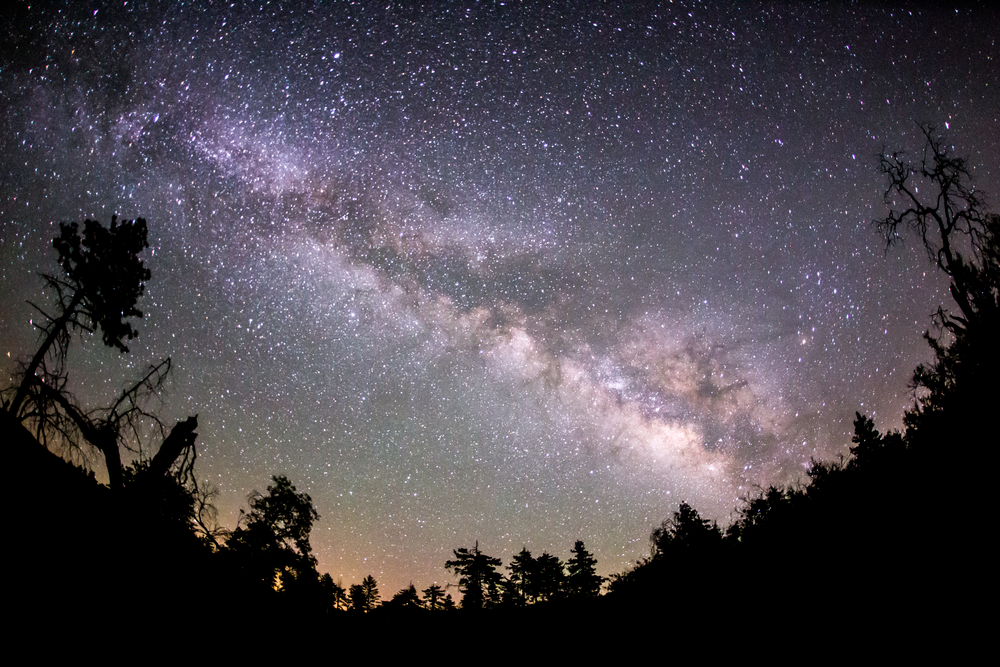How Many Stars Are There in the Sky?
We could marvel at the mysteries of the cosmos ... or we could do some math.

You look up into the night sky. Before you—above you, around you—stretches a pitch-black canvas washed with streaks and studs of brightness. You are, you realize, surrounded by light that has traveled the expanse of the universe to reach your eyes. You feel tiny and enormous at the same time. You are, literally, awed.
But what, actually, is so awesome? How many stars are you actually seeing? Why simply marvel at the majesty and mystery of it all when you can also do some math?
Let's start with the galaxies. There are, astronomers estimate, around 170 billion galaxies in the observable universe, stretching out over a radius of some 45.7 billion* light-years. Those galaxies vary in terms of the number of stars they contain, Universe Today notes: Some spiral galaxies have more than a trillion stars. Some giant elliptical galaxies have 100 trillion stars. There are also tiny dwarf galaxies—tiny being, obviously, a relative term here—that have a significantly fewer number of stars.
The Milky Way—our little corner of the observable universe—has, for its part, some 400 billion stars.
So! If we multiply the (estimated) average number of stars in each galaxy by the number of galaxies in the observable universe—and carry the billion, etc.—we get a rough estimate of ALL THE STARS we're capable of observing. And what we find is described, extremely efficiently, in the video below: There are roughly a septillion stars in the observable universe. That's 1,000,000,000,000,000,000,000,000 stars. Which is, for lack of a more fitting description ... a lot of stars.
So, then: Back to you, you tiny little human, standing on the surface of your tiny little planet in your tiny little corner of the universe. How many of those septillion stars are actually visible to you? An extremely, yep, tiny little percentage. There are only about 5,000 stars visible to the naked, average, human eye, MinutePhysics points out. And, because the Earth itself gets in the way, you can only see about a half of those from where you stand.
Which means that, when you gaze into the heavens, full of wonderment and awe, you see around 2,500 stars scattering the sky. If you're lucky, that is, and the stars align.
* This figure has been updated to reflect the estimated size, rather than the estimated age, of the universe.